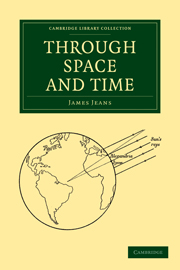Summary
We all know now that our sun is a very ordinary star, but it took men a long time to discover this. Perhaps this is not surprising, for certainly it does not look much like an ordinary star to us. The reason is, of course, that it is enormously nearer than any of the other stars.
We have seen how the ancients imagined the earth to be the fixed centre of the universe, round which everything else moved. The stars merely formed a background of light, against which they could map out the motions of the sun, moon and planets. They thought of the stars as attached to the inside of a hollow sphere, which turned round over the earth much as a telescope dome turns round over the floor of a telescope, or “as one might turn a cap round on one's head”. And although a few of the more philosophical of the Greeks gave reasons for thinking that the earth moved round the sun, they had no means of making their opinions or arguments known to a wide circle of people, so that these were forgotten as the world gradually became submerged in the intellectual darkness of the Middle Ages. Then, in 1543, a Polish monk, Copernicus, advanced views and arguments which were very similar to those which Aristarchus of Samos had propounded 1800 years earlier, although the extent to which he was indebted to his Greek predecessors is not clear.
- Type
- Chapter
- Information
- Through Space and Time , pp. 173 - 202Publisher: Cambridge University PressPrint publication year: 2009First published in: 1934



